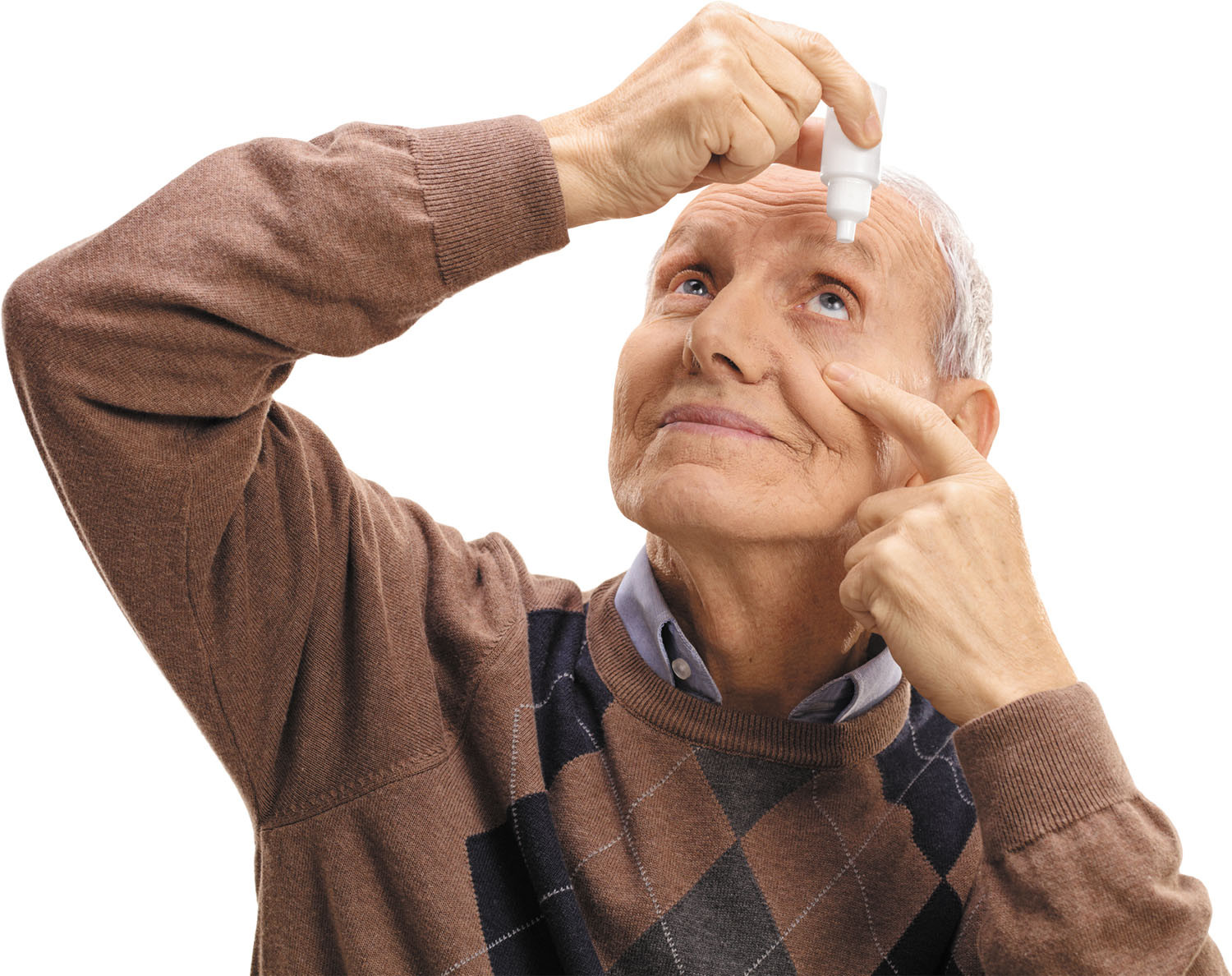Common eye problems and how to fix them
In most cases, the solution to relieving symptoms is simple.

Your eyes are tearing all day long, or they're dry and burning or crusty. What seems like a minor symptom suddenly has a major effect on your vision and your day. But take heart: in most cases there's a fix for the discomfort. "Ninety percent of the complaints are common and temporary," says Dr. Matthew Gardiner, an ophthalmologist with Harvard-affiliated Massachusetts Eye and Ear Infirmary.
Here are some common eye problems and the typical fix for each one.
Red eyes
Any time the eye is irritated — whether it's from dust, allergies, or dryness — the eye's response is to get red. "The tiny blood vessels in the eye swell up because they contain more blood, and that makes your eyes look red," Dr. Gardiner explains.
The fix: For rare occasions, the "get the red out" over-the-counter medication tetrahydrozoline (Visine, Opti-Clear) may be safe. But don't make using it a habit. "The medication makes the red go away, but your eyes can become dependent on it. When you stop using it, there's a rebound effect and your eyes get redder than ever," Dr. Gardiner says. Treating an underlying condition or waiting out redness is a better plan. Artificial tears (without tetrahydrozoline) are a safe way to make your eyes feel better and may decrease redness too.
Itchy eyes
When your eyes are so itchy you wish you could scratch them, the cause is often an allergy. It could be a seasonal allergy, or it could be a reaction to a lotion or cosmetic.
The fix: Treating underlying allergies with oral antihistamines will help. Examples include fexofenadine (Allegra) or loratadine (Claritin), available over the counter. Need something stronger for your eyes? Dr. Gardiner recommends nonprescription topical antihistamine eye drops such as ketotifen (Zaditor) or prescription-only eye drops such as olopatadine (Patanol).
Crusting or gooey eyes
Eye debris has a few different causes. "If your eyes tear, the tears can dry into a crystalline, sandy material on your lids. If there's something goopier or thicker, then it's either pus from an infection like conjunctivitis or mucus from severe allergies," explains Dr. Gardiner.
The fix: Treating an underlying condition (like allergies) will reduce eye debris. For a bacterial infection that's causing goopy eyes, your doctor can prescribe antibiotic drops or ointment. If the infection is caused by a virus, you'll have to wait until it goes away on its own, usually in just a few days.
Dry or burning eyes
Dry, burning, or gritty sensations are the result of a change in either tear quality or quantity. Tear quality changes when there's a blockage in the glands around the eye that produce natural oils to keep the eye slick and help it retain water. Tear quantity changes when the tear glands aren't making enough fluid, which is common as we age. Some inflammatory conditions (such as Sjögren's syndrome) can cause dry eyes as well.
And here's something that can make dry eyes worse: looking at electronic gadgets too long without blinking. Each time you blink, you reapply a new wet coating on your eyes (the tear film). When you don't blink enough, you aren't giving your eyes a chance to replenish the tear film.
The fix: To improve tear quality, Dr. Gardiner recommends applying warm compresses on the eyes for five minutes, twice per day, to help unclog oil glands. To improve tear quantity, you can use artificial tears (they don't have to be preservative-free unless you use them more than six times per day) or your doctor can prescribe ophthalmic cyclosporine (Restasis) to stimulate the tear glands to make more tears. Another solution: plugs for the tear ducts. "We take silicone plugs and place them in the openings of the tear drainage ducts, so your tears last longer. The plugs usually last about six months," Dr. Gardiner says.
Watery eyes
When the tear drainage ducts become blocked, you experience watery eyes. Wateriness may also occur when your eyes react to dust or allergens, and your eyes pump out tears to flush irritants.
The fix: "We treat the underlying cause of irritation, such as allergies. You have to figure out what's causing the problem and eliminate that. Or we may check for blockages in the tear drainage system," Dr. Gardiner says.
When should you see a doctor?
It's okay to relieve symptoms on your own, unless there's something persistent that's been going on for many days or something severe. "Then it's time to visit a doctor — especially if your eye is very swollen, if your vision has changed, or if you have pain," Dr. Gardiner says.
Image: © Ljupco/Getty Images
Disclaimer:
As a service to our readers, Harvard Health Publishing provides access to our library of archived content. Please note the date of last review or update on all articles.
No content on this site, regardless of date, should ever be used as a substitute for direct medical advice from your doctor or other qualified clinician.












